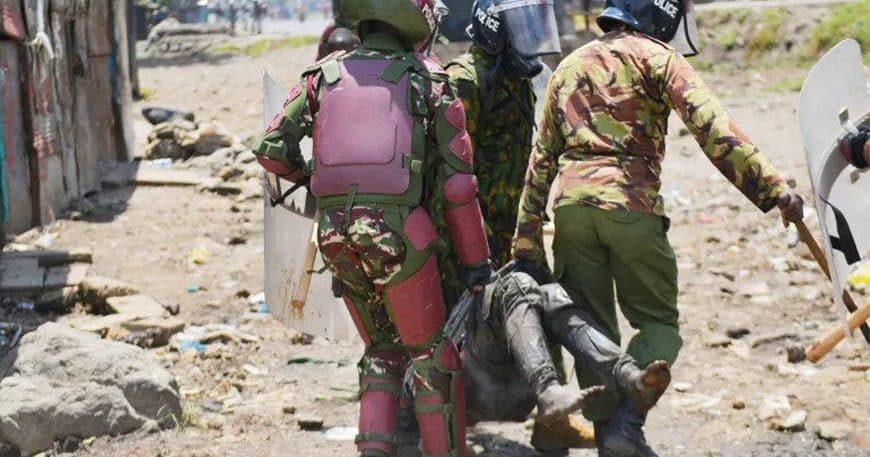There’s a saying in the world of journalism which sounds like a bad joke: “Bad news are good news”. The attack on the French satirical Newspaper “Charlie Hebdo” which left 12 people dead lead to an incredible boost of its business, the following issue print run had 7.95 million copies in six languages. In contrast, its normal print run was 60,000, of which it typically sold 30,000 to 35,000 copies. This example is unprecedented, but it shows an ethical dilemma: How should media deal with atrocities, even in the case where they are the victims.
The recent Dusit D2 attack in Nairobi was a “field day” for TV live coverage, reporters and press photographers, not to forget all these self-proclaimed social-media amateur-journalists spreading out facts and fake news in search of followers and retweets. Unfortunately, the bad joke is truth and the TV live coverage of these events gets highest viewing figures while press photographers and picture-agencies can earn more money with sensational photos than they get for a picture of a handshake of two Kenyan Politicians. The big question is: what about work ethics, what about (conflict) sensitive reporting, human dignity, and the protection of victims?
While most Kenyans were still comfortably seated in front of their TV sets or watching Riverside attack live reporting at their workplace on TV’s and smartphones, the “scandal” entered by a backdoor. During the still ongoing attack and security operations, the notable New York Times published a photo in their online edition, which showed partly two dead bodies of the attack in the “Secret Garden restaurant” of Dusit D2. Minutes later, a storm of protest started on social-media, accusing the editorial office of the New York Times in Nairobi to portray a special “African narrative” without respect to the dead people because of their black skin. NYT was also accused that they would never report the numerous shootings in the US the same way they did. While the text of the report, written by the Nairobi bureau-chief Kimiko de Freytas-Tamura, was fact based and sensitive, the picture alone provoked the scandal, leading many people to demand the revocation and the withdrawal of Kimiko’s accreditation in the country. Even the Media Council of Kenya (MCK), the governmental regulatory body, embraced the arguments of angry Kenyans and menaced the NYT to close its Nairobi office if the newspaper would not withdraw the photo from its article.
The difficult situation was also subject of discussion within the community radio journalists of the GIZ-CPS – KCOMNET media project known as “Umoja – Radio for peace”. How should a reporter talk about all of this? What kind of pictures should be shown on the website? Where is the red line when it comes to human dignity? What kind of questions should be asked? The case of a K24 reporter trying persistently to interview a traumatized woman who just escaped the assaulted building was one of the worst examples of journalist’s behaviors. The Code of Conduct for the Practice of Journalism in Kenya requires that the media should avoid presenting acts of violence, armed robberies, banditry and terrorist activities in a manner that glorifies such anti-social conduct. They should respect the dignity of victims and report in a sensitive manner with regards to the chosen words.
If there is no question when it comes to respecting the victims’ human dignity and the need for a sensitive language in written and spoken words, what to report and what to show remains an open query. Journalists are quite often the eyes and ears of the world.Reporting of war, crime, violent extremism and humanitarian crisis shouldn’t be dealt lightly – it is not “Alice in Wonderland”. Right of access to information exists in Kenya and journalists have the duty to inform in an objective, truth- and fact based way. What to show involves an ethical choice that no responsible editor should mix with business considerations. Very often, journalists have to be the eye witnesses of atrocities which other people never see, but there is a certain amount of atrocity that the world should see to understand the horror and to try to eradicate the causes of it. In that sense, even pictures we can hardly bear to look at get a new meaning and the victims another dimension of dignity. A reporter who is doing his job in a sensitive manner is not driven by voyeurism but by the duty to show quite often the unbelievable sad and cruel reality. In the light of atrocities like the humanitarian crisis and the war in Yemen, the daily drama of refugees trying to cross the Mediterranean see, genocides which happened in Ex-Yugoslavia, Rwanda and other parts of the globe, human rights violations, natural disasters, and horrifying things humanity has to go through, the media cannot be silent. They have a duty to show it, to talk about it, to investigate and to try to discover who is sharing responsibility even with the risk of shocking some readers, listeners or viewers.
Sensitive journalism is not sugarcoated reporting but is about showing the whole picture. It means, for example, taking into account both the victim’s pain and trauma and the terrorist’s mother who might cry losing her son.
(Michael Schweres is a senior journalist, author and journalism lecturer currently working with the GIZ Civil Peace Service in partnership with Kenya Community Media Network (KCOMNET) to support community radio stations with trainings on conflict sensitive reporting and content production).
The pictures shown below have been used in a journalists training to discuss the question of “WHAT TO SHOW”. They have all been published in different media.



